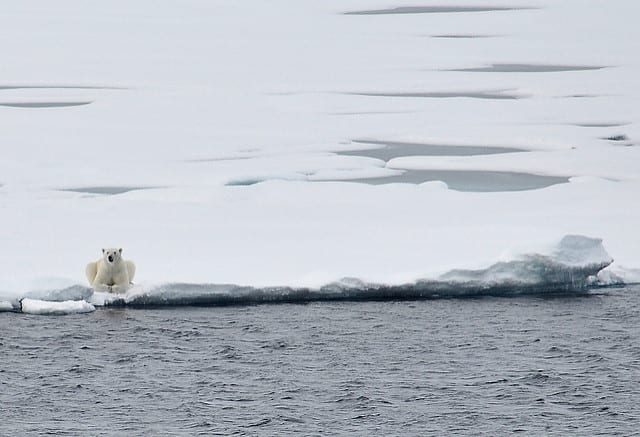It's 3:30 in the morning. As Lucy Bartholomew's mother braids her hair, she asks, “did you sleep?â€, to which Lucy responds, “a littleâ€. It's a few hours before the start of one of the most grueling races in the world. At 22 years old, Lucy is one of the youngest participants ever. Lucy has competed in races ranging from 50-100-km through the wilderness, but this was a different beast. For starters, the race is 38 miles, or about 1.5 marathons, longer than anything she's ever run. It also snakes through rugged terrain and entails a climb of 2,550 vertical feet in the first 4.5 miles. In this particular year (2018), the mid-day temperature reached 97 degrees Fahrenheit at the 62-mile marker, making it the 5th hottest race on record and nearly impossible to complete.
The Western States 100-Mile Endurance Run is the oldest 100-mile race in the world and remains a renowned destination for ultra-runners. Ultramarathons include any distance longer than a marathon (26.2 miles). It begins in Olympic Valley, California near the location of the 1960 Winter Olympics and ends 100.2 miles later in Auburn, California.
Watching runners push through unimaginable distances like this makes one think of our limits as humans. How can most participants finish the 100-mile race in under 24 hours? How can the top runners complete the same race in under 15 hours? The answer, as always, is science.
Simply put, gaining the ability to run was one of the most consequential events in human history. About 2 million years ago, we started running, likely as a way to more effectively track down prey. Running has grown in popularity worldwide, with the number of marathoners worldwide increasing by nearly 50% from 2008-2018. We are actually one of the most elite long distance running animals in the world with the ability to outrun cheetahs and even horses in marathon-length distances. This is almost entirely due to sweat, which allows us to cool off more efficiently compared to panting, which animals rely on. Interestingly, animals like horses and hippos sweat but the content of their sweat dramatically differs from ours. For example, hippo sweat is a pinkish-red hue, contains antibiotics, and functions as sunscreen. However panting is still the main mode of cooling off for animals that sweat.
Sweat is incredibly important during any long-distance race, but especially during an ultrarace like Western States 100. At Robinson Flats (mile marker 30.3), Lucy is in first place. She meets her dad and takes a short break to gorge on watermelon, refill water reserves, and continues running.
Replenishing lost liquid and electrolytes is vital during long-distance running. On average, runners lose around 1-liter of water per hour through sweat. At that rate, runners can shed around 2-lbs each hour. Performance significantly decreases when more than 2% of body weight is lost, so it makes sense that running longer than 60-90 minutes requires replenishment for the average person. Current guidelines recommend taking in 300-800 mL of liquid each hour on a hot day to balance losses. Ultra-runners, however, are not average. Though the top 10 participants completed the 2018 Western States 100 in 16.4-hrs on average, most finished in around 24-hrs. At that rate, an average runner could've lost 48-lbs without liquids, so constant hydration is key.
As Lucy progresses through the race, problems arise. Near the Michigan Bluff aid station (mile maker 55.7), Lucy's dad waits in agony, intently surveying the forested corner where Lucy is expected. Courtney Dauwalter, the prevailing fan favorite, arrives first. Eight minutes later, Lucy rounds the corner. After about 9-hours of running through California backwoods, she's exhausted. Somehow Lucy takes a brief break, refuels, and begins the journey again. At this break, however, Lucy chugs Gatorade in place of water.
Electrolyte and carbohydrate balance are important aspects of maintaining peak performance levels during long-distance races. To accomplish this, runners rely on supplements like energy gels and generally have a nutrition plan for each race. While running, the body uses carbohydrates in the form of glucose present in our blood and glycogen stored in our muscles for fuel. Runners need to consume 40-60 grams of carbohydrates (120-240 calories) per hour with maltodextrin and fructose being the most common carb sources.
Interestingly, some ultra-runners take a more unique approach to refueling. In addition to the customary energy gels to replace lost carbs, ultra-runners have been known to consume some of the worst junk food imaginable throughout an ultra-race including candy, potato chips, pretzels, and cookies. The reason behind this is absorbance. In a nutshell, not all carbohydrates are equally absorbed during high intensity exercise. Highly processed food high in sugar, like candy, is pre-processed and thus absorbed quicker, allowing ultra-runners to utilize the much needed glucose. The fast sugar absorbance is the same reason these foods are so unhealthy if eaten on a regular basis. Junk food like potato chips and pretzels, on the other hand, act as essential sources of salt. At Western States 100, potato chips are provided in bulk at aid stations and even recommended as a salt source by race organizers. On average, we lose salt at around 950 mg/L while running, meaning we're losing about 1-gram per hour, so quick sources of carbs and salt can make a huge difference during a long race.
As the afternoon drudges on, Lucy begins to feel weary and in her own words, she was “cooking insideâ€. The heat at this point is unbearable. The max temperature recorded for the day was 106 degrees Fahrenheit in the late afternoon at the River Crossing (mile marker 78) and with 22 miles to go, the race was far from over. Lucy sludges on and eventually gets passed once more, finishing the race in 3rd place amongst women participants. The winner, Courtney Dauwalter, finished in the second-fastest time ever by a woman, so Lucy's accomplishment is still nothing short of remarkable.
Simply completing an ultra-race is incredibly rare. In the U.S., only 0.5% of people have completed a marathon while 0.03% have completed an ultra-marathon. Over the past 23 years, however, the number of ultra-runners has increased by an astounding 1,676% worldwide. Though ultra-running is arguably irrational, dangerous, and just plain crazy, seeing runners complete a 100-mile journey with nothing but their feet is awe-inspiring, and we have science (and likely some brains knocked loose) to thank.
About the Author
John J. Spiekerman is a postdoctoral researcher in the Department of Plant Biology at the University of Georgia. John's research focuses on salt tolerance in seashore paspalum, a halophytic grass species, with the hope of improving salt-sensitive food crops. He is a co-founding member of Athens Science Observer, where he served as Editor-in-Chief in 2017, and also served on the programming board for the Athens Science Café. He loves pizza, coffee, playing music, reading, and running…exactly in that order.
- John Spiekermanhttps://athensscienceobserver.com/author/john-spiekerman/November 3, 2020
- John Spiekermanhttps://athensscienceobserver.com/author/john-spiekerman/March 18, 2020
- John Spiekermanhttps://athensscienceobserver.com/author/john-spiekerman/July 13, 2015
- John Spiekermanhttps://athensscienceobserver.com/author/john-spiekerman/









